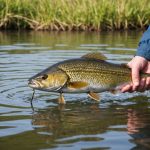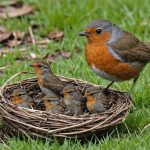Transforming UK Golf Courses: Effective Strategies for Enhancing Wildlife Harmony
Golf courses, often perceived as pristine and manicured landscapes, can also serve as vital habitats for wildlife and contribute significantly to biodiversity conservation. In the UK, where golf is a beloved sport, there is a growing need to balance the recreational use of golf courses with the preservation of natural environments. Here, we explore the effective strategies for transforming UK golf courses into havens of wildlife harmony.
Understanding the Environmental Impact of Golf Courses
Golf courses, by their nature, can have a significant environmental impact. They require large areas of land, substantial water resources, and the use of various chemicals for turf management. However, when managed correctly, these same courses can become valuable ecosystems.
A découvrir également : Combatting Plastic Pollution: How the UK is Protecting Seabirds from Ingesting Harmful Waste
“A Global Perspective on the Environmental Impact of Golf” highlights the emerging differences in environmental management practices between developed and developing countries. In the UK, golf courses can be managed to mitigate negative impacts and enhance biodiversity[2].
Integrating Turf Management with Wildlife Conservation
Effective turf management is crucial for maintaining healthy golf courses while also supporting local wildlife. Here are some key strategies:
A voir aussi : Essential Strategies for UK Anglers to Protect Fish Populations and Promote Sustainable Fishing
Resilient Turf and Soil Health
- Use of Native Grasses: Incorporating native grass species into the turf can enhance soil health and reduce the need for fertilizers and pesticides.
- Minimal Water Use: Implementing efficient irrigation systems and using drought-resistant grasses can help conserve water, a critical resource for both golf courses and wildlife.
- Organic Practices: Adopting organic turf management practices can reduce the chemical load on the environment, creating a safer habitat for insects and other wildlife.
For example, the “itm programme” (integrated turf management) emphasizes a holistic approach to turf care, focusing on soil health, minimal chemical use, and sustainable water management. This approach not only benefits the golf course but also contributes to biodiversity conservation[5].
Creating Wildlife-Friendly Habitats
Golf courses can be designed and managed to create diverse habitats that support a wide range of wildlife.
Biodiversity Conservation
- Habitat Restoration: Restoring natural habitats such as wetlands, woodlands, and meadows within golf courses can provide critical habitats for various species.
- Wildflower Areas: Planting wildflower areas around the course can attract pollinators and other beneficial insects.
- Water Features: Managing water features like ponds and lakes to support aquatic life can add to the biodiversity of the course.
For instance, a study on “The Role of Golf Courses in Biodiversity Conservation and Ecosystem Management” notes that golf courses can serve as corridors for wildlife movement and provide habitat diversity in otherwise simplified landscapes[4].
Practical Strategies for Golf Clubs
Here are some practical strategies that golf clubs in the UK can implement to enhance wildlife harmony:
Cultural Practices
- Reduce Turf Area: Reducing the area of manicured turf and replacing it with natural habitats can help in conserving resources and supporting biodiversity.
- Use of Local Species: Planting local species of trees, shrubs, and flowers can help in creating a more natural environment that supports local wildlife.
- Community Engagement: Engaging with local communities and wildlife groups can help in raising awareness and implementing effective conservation practices.
| Strategy | Benefits | Challenges |
|---|---|---|
| Reduce Turf Area | Conserves resources, supports biodiversity | Initial cost of redesign, potential impact on playability |
| Use of Local Species | Supports local wildlife, reduces maintenance | May require initial investment in planting and care |
| Community Engagement | Raises awareness, fosters collaboration | Requires ongoing commitment and resources |
Climate Change Mitigation
- Future Proofing: Implementing practices that help golf courses adapt to climate change, such as using drought-resistant grasses and efficient irrigation systems, can ensure long-term sustainability.
- Carbon Footprint Reduction: Reducing the carbon footprint of golf courses through sustainable practices can contribute to global efforts to combat climate change.
“As decision makers, we have a responsibility to future-proof our golf courses. This includes adopting sustainable practices that not only benefit the environment but also ensure the long-term viability of our courses,” says Forrest Richardson, a renowned golf course architect[1].
Case Studies and Success Stories
Several golf courses in the UK have already implemented successful strategies for enhancing wildlife harmony.
Olivas Links Golf Course
- This public golf course in Southern California (though not in the UK, it serves as a global example) was designed with biodiversity in mind. It features natural habitats, efficient water use, and minimal chemical application, making it a model for sustainable golf course management[1].
The Links at Las Palomas
- This golf course received an award for “International Development of the Year” due to its innovative approach to integrating golf with natural habitats. The course includes wetlands, natural grasses, and minimal turf area, creating a thriving ecosystem[1]. and Future Directions
Transforming UK golf courses into wildlife-friendly habitats is not just a moral imperative but also a practical necessity. By adopting integrated turf management practices, reducing chemical use, and creating diverse habitats, golf courses can contribute significantly to biodiversity conservation.
As we move forward, it is crucial to engage with local communities, professional golf associations, and environmental groups to ensure that these strategies are widely adopted. Here are some final tips for golf clubs looking to enhance wildlife harmony:
- Conduct Regular Audits: Regular environmental audits can help identify areas for improvement and monitor the effectiveness of conservation practices.
- Educate Members: Educating golf club members about the importance of wildlife conservation can foster a culture of sustainability within the club.
- Collaborate with Experts: Collaborating with environmental experts and wildlife conservation groups can provide valuable insights and resources for implementing effective conservation strategies.
In the words of Forrest Richardson, “The game is supposed to be fun But it can also be a powerful tool for creating harmony between human development and nature.”[1]
By embracing these strategies, UK golf courses can not only enhance their environmental credentials but also contribute to a more sustainable future for both the sport and the natural world.











